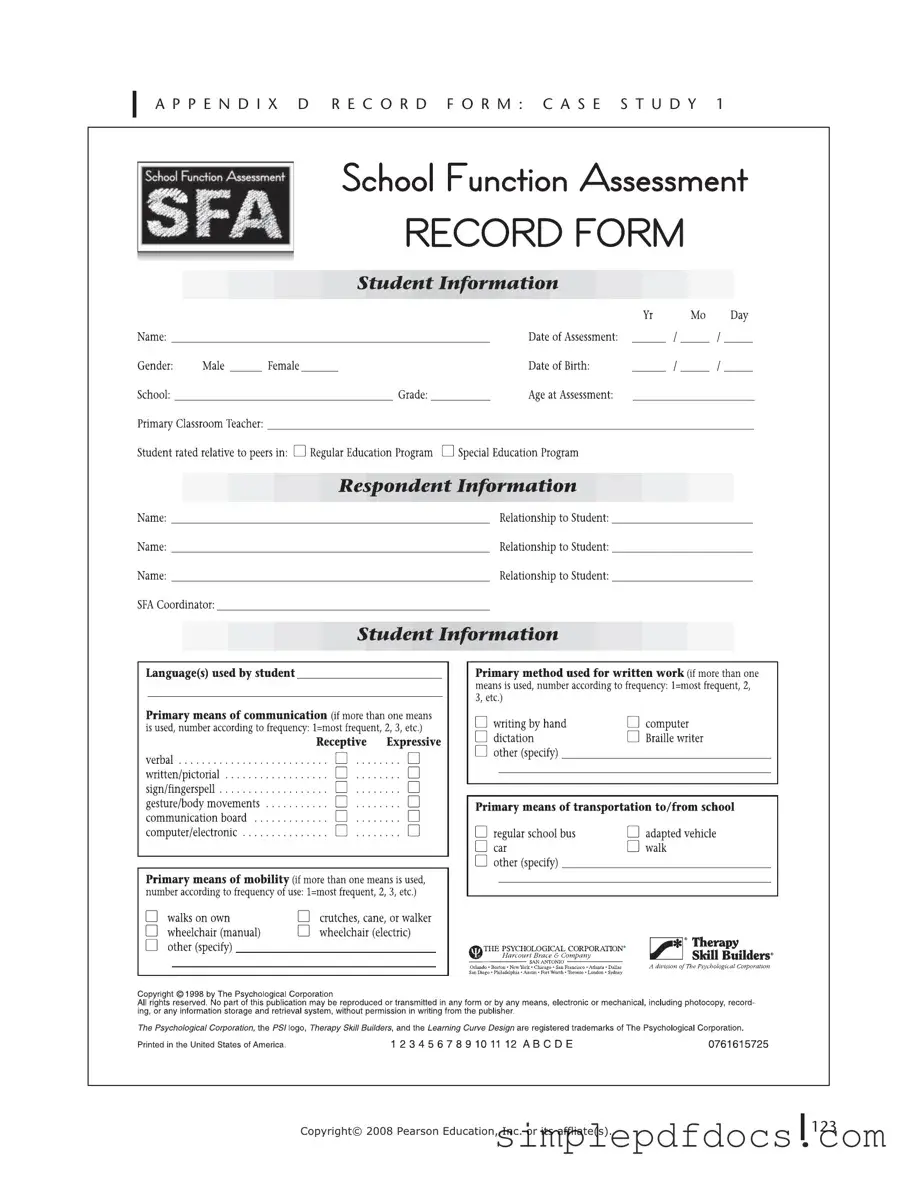The School Function Assessment (SFA) form plays a crucial role in understanding and evaluating the functional performance of students within a school setting. Designed primarily for children with disabilities, this assessment tool helps educators and support staff identify how well students can participate in various school-related activities. It focuses on three main areas: participation, task support, and activity performance. By gathering information from teachers and caregivers, the SFA provides insights into the child's abilities and challenges in the classroom and during school routines. This information is invaluable for developing tailored interventions and support strategies that enhance a student’s educational experience. Furthermore, the SFA emphasizes the importance of collaboration among educators, parents, and specialists, ensuring that each child’s unique needs are addressed effectively. Overall, the School Function Assessment serves as a comprehensive framework for fostering a supportive learning environment that promotes student success.
